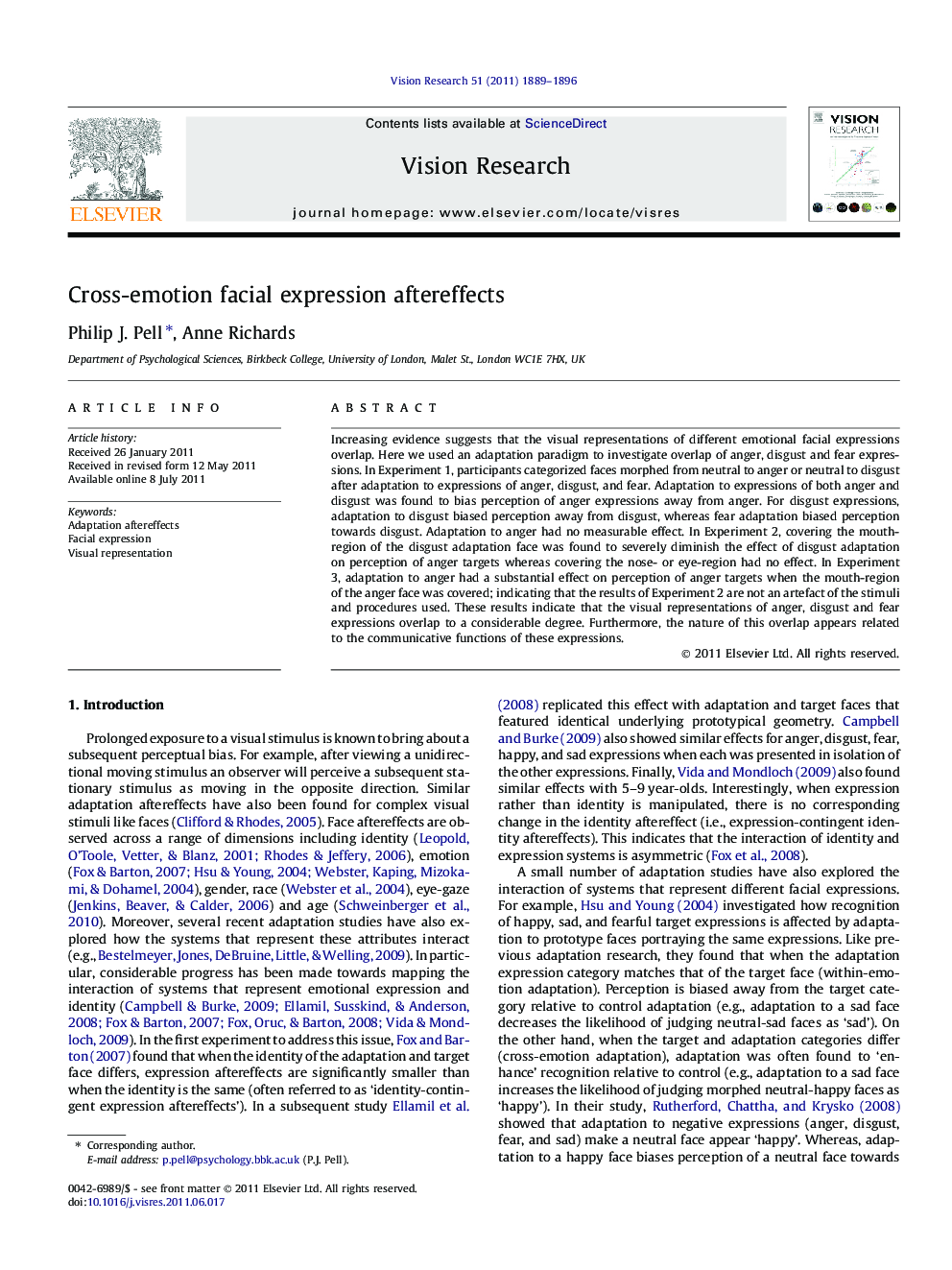| Article ID | Journal | Published Year | Pages | File Type |
|---|---|---|---|---|
| 6203737 | Vision Research | 2011 | 8 Pages |
Increasing evidence suggests that the visual representations of different emotional facial expressions overlap. Here we used an adaptation paradigm to investigate overlap of anger, disgust and fear expressions. In Experiment 1, participants categorized faces morphed from neutral to anger or neutral to disgust after adaptation to expressions of anger, disgust, and fear. Adaptation to expressions of both anger and disgust was found to bias perception of anger expressions away from anger. For disgust expressions, adaptation to disgust biased perception away from disgust, whereas fear adaptation biased perception towards disgust. Adaptation to anger had no measurable effect. In Experiment 2, covering the mouth-region of the disgust adaptation face was found to severely diminish the effect of disgust adaptation on perception of anger targets whereas covering the nose- or eye-region had no effect. In Experiment 3, adaptation to anger had a substantial effect on perception of anger targets when the mouth-region of the anger face was covered; indicating that the results of Experiment 2 are not an artefact of the stimuli and procedures used. These results indicate that the visual representations of anger, disgust and fear expressions overlap to a considerable degree. Furthermore, the nature of this overlap appears related to the communicative functions of these expressions.
⺠Adaptation to anger and disgust facial expressions biases perception of faces morphed from neutral to anger away from anger. ⺠Adaptation to disgust and fear expressions biases perception of faces morphed from neutral to disgust in opposite directions. ⺠Adaptation to an anger expression had no measurable effect on perception of faces morphed from neutral to disgust. ⺠Covering the mouth- but not the nose- or eye-region severely diminishes the effect of disgust adaptation on anger perception. ⺠The role of the mouth in disgust adaptation on anger perception is not an artefact of categorizing faces as angry or happy.
